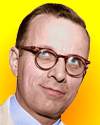
Born 25 Nov 1913; died 3 Dec 1993 at age 80. quotes
American physician and author best known for his reflective essays on a wide range of topics in biology. While his specialities are immunology and pathology, in his book, Lives of a Cell, his down-to-earth science writing stresses that what is seen under the microscope is similar to the way human beings live, and he emphasizes the interconnectedness of life. As a research scientist, Thomas made an impact by suggesting that an immunosurveillance mechanism protects us from the possible ravages of mutant cells, an idea later championed by Macfarlane Burnett. He also proposed that viruses have played a major role in the evolution of species by their ability to move pieces of DNA from one individual or species to another.
American physician and author best known for his reflective essays on a wide range of topics in biology. While his specialities are immunology and pathology, in his book, Lives of a Cell, his down-to-earth science writing stresses that what is seen under the microscope is similar to the way human beings live, and he emphasizes the interconnectedness of life. As a research scientist, Thomas made an impact by suggesting that an immunosurveillance mechanism protects us from the possible ravages of mutant cells, an idea later championed by Macfarlane Burnett. He also proposed that viruses have played a major role in the evolution of species by their ability to move pieces of DNA from one individual or species to another.
The Lives of a Cell: Notes of a Biology Watcher, by Lewis Thomas. - book suggestion.
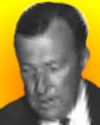
1955
South African-American geophysicist and inventor who, as a student at the University he built a sand yacht out of an old automobile and sailed it on nearby salt flats, much like an ice boat with wheels. By 1937, he invented the bathythermograph (or BT), a temperature measuring device. Initially it was used by biologists and oceanographers, but during WW II in conjunction with sonar it played a major role in the detection of German submarines. In 1954, he became the first U.S. ambassador to UNESCO. He launched a weekly science-oriented comic strip called Our New Age, seen in 100 newspapers worldwide (1957-73). As a futurist, Spilhaus suggested covered skyways and tunnels connecting city buildings, useful in bad weather.[Image right: bathythermograph]
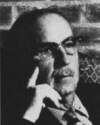
Born 25 Nov 1893; died 22 May 1970 at age 76. quotes
American naturalist, conservationist, writer, and critic. His fame began with The Modern Temper (1929), a book in which he described how science replaced religious certainties with rational skepticism, leaving man in a meaningless world. But Krutch later discovered profound meaning in Nature. On doctor's orders, in 1950 he had to leave New York and New England, where he had been teaching, for the dry desert air of the Southwest. In the beauty of the Sonoran Desert, he wrote masterpieces of natural history, including The Voice of the Desert and The Desert Year, (which won the John Burroughs Medal in 1954). Dr. Krutch lived his retirement years in Tucson, Arizona, and was a co-founder of the Arizona-Sonora Desert Museum.
American naturalist, conservationist, writer, and critic. His fame began with The Modern Temper (1929), a book in which he described how science replaced religious certainties with rational skepticism, leaving man in a meaningless world. But Krutch later discovered profound meaning in Nature. On doctor's orders, in 1950 he had to leave New York and New England, where he had been teaching, for the dry desert air of the Southwest. In the beauty of the Sonoran Desert, he wrote masterpieces of natural history, including The Voice of the Desert and The Desert Year, (which won the John Burroughs Medal in 1954). Dr. Krutch lived his retirement years in Tucson, Arizona, and was a co-founder of the Arizona-Sonora Desert Museum.
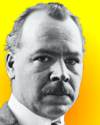
1933
Born 25 Nov 1887; died 26 Jan 1943 at age 55.
Russian botanist and plant geneticist who established 400 research institutes and made expeditions throughout the world (1916-33), leading Russian plant hunters on the first attempt to “cover the globe” in search of wild plants and primitive cultivators. He brought back a huge collection of plants samples for experiments in plant breeding in order to improve the productivity of cereal grains, as well as some other types of crops. Trofim Lysenko, the official Soviet biology spokesman, denounced Vavilov's Mendelevian genetics as counter to the dogmas of communism. He was arrested in 1940 and imprisoned at a concentration camp at Saratov, where he spent his final years. He died there of malnutrition.[EB gives birth date as New Style 25 Nov 1887 (Old Style 13 Nov 1887).]
Russian botanist and plant geneticist who established 400 research institutes and made expeditions throughout the world (1916-33), leading Russian plant hunters on the first attempt to “cover the globe” in search of wild plants and primitive cultivators. He brought back a huge collection of plants samples for experiments in plant breeding in order to improve the productivity of cereal grains, as well as some other types of crops. Trofim Lysenko, the official Soviet biology spokesman, denounced Vavilov's Mendelevian genetics as counter to the dogmas of communism. He was arrested in 1940 and imprisoned at a concentration camp at Saratov, where he spent his final years. He died there of malnutrition.[EB gives birth date as New Style 25 Nov 1887 (Old Style 13 Nov 1887).]
Where Our Food Comes From: Retracing Nikolay Vavilov’s Quest to End Famine, by Gary Paul Nabhan. - book suggestion.
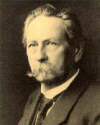
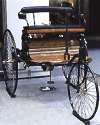
Karl Friedrich Benz was a German mechanical engineer who designed and in 1885 built the world's first practical automobile to be powered by an internal-combustion engine. The earliest engine he built was a two-stroke engine, which after two years' work first ran on 31 Dec 1879. He took out various patents on this machine, and opened a factory. After developing financial backing, Benz designed a “motor carriage”, with an engine based on the Otto four-stroke cycle. Unlike Daimler, who installed his engine in an ordinary carriage, Benz designed not only his engine, but innovated the vehicle as well. On 29 Jan 1886, he was granted a patent on it and on 3rd Jul 1886, he made the world's first automobile public test drive. Public sale began in 1888.
The Invention of the Automobile (Karl Benz and Gottlieb Daimler), by St. John C Nixon. - book suggestion.
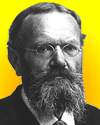
Born 25 Nov 1841; died 16 Jun 1902 at age 60. quotes
Friedrich Wilhelm Karl Ernst Schröder was a German mathematician who was prominent for his studies in algebraic logic, ordered sets, lattice theory, and ordinal numbers. Schröder studied mathematics under Otto Hesse, physics under Gustav Kirchhoff and chemistry under Robert Bunsen at Heidelberg leading to a Ph.D. (1862). In the following years as a teacher, his positions included schools at Zürich, and at the Black Forest of Baden-Baden, allowed pursuits as an enthusiastic mountain climber and hiker. By 1874, he was a full professor, and from 1876 spent the rest of his career at the Technische Hochschule in Karlsruhe. Schröder’s original interest in mathematical physics led to investigating its foundations and a deeper involvement in logic.«
Friedrich Wilhelm Karl Ernst Schröder was a German mathematician who was prominent for his studies in algebraic logic, ordered sets, lattice theory, and ordinal numbers. Schröder studied mathematics under Otto Hesse, physics under Gustav Kirchhoff and chemistry under Robert Bunsen at Heidelberg leading to a Ph.D. (1862). In the following years as a teacher, his positions included schools at Zürich, and at the Black Forest of Baden-Baden, allowed pursuits as an enthusiastic mountain climber and hiker. By 1874, he was a full professor, and from 1876 spent the rest of his career at the Technische Hochschule in Karlsruhe. Schröder’s original interest in mathematical physics led to investigating its foundations and a deeper involvement in logic.«
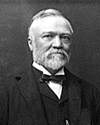
Born 25 Nov 1835; died 11 Aug 1919 at age 83. quotes
Scottish-born American steel industrialist and humanitarian who began his career in the iron and steel business in 1865, focussed on steeel from 1873, owned Homestead Steel Works in 1888, and by 1899 had founded the Carnegie Steel Co., which merged with United States Steel Corp. in 1901. He then devoted the rest of his life to philanthropy, especially as a benefactor of over 1700 libraries. He also supported public education, and international peace. His parents were handloom weavers in Scotland, made poor by the advent of mechanized factories, and the family emigrated to Pittsburgh, Pennsylvania, U.S., in 1848. At age 17, he became a telegraph operator, and by 1859 was vice-president of the Pennsylvania Railroad.«
Scottish-born American steel industrialist and humanitarian who began his career in the iron and steel business in 1865, focussed on steeel from 1873, owned Homestead Steel Works in 1888, and by 1899 had founded the Carnegie Steel Co., which merged with United States Steel Corp. in 1901. He then devoted the rest of his life to philanthropy, especially as a benefactor of over 1700 libraries. He also supported public education, and international peace. His parents were handloom weavers in Scotland, made poor by the advent of mechanized factories, and the family emigrated to Pittsburgh, Pennsylvania, U.S., in 1848. At age 17, he became a telegraph operator, and by 1859 was vice-president of the Pennsylvania Railroad.«


(16 Sep 1870)
American astrophysicist and spectroscopist who made the first telescopes designed for celestial photography. He produced a classification scheme of stars based on their spectra (which compares with the Italian astronomer, Angelo Secchi). Rutherfurd spent his life working in his own small observatory, built in the garden of his New York City home (1856), where he photographed (from 1858) the Moon, Jupiter, Saturn, the Sun, and stars down to the fifth magnitude. While using photography to map star clusters, he devised a new micrometer to measure distances between stars with improved accuracy. When Rutherford began (1862) spectroscopic studies, he devised a machine to rule highly sophisticated diffraction gratings.« more
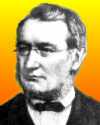
Born 25 Nov 1814; died 20 Mar 1878 at age 63. quotes
Julius Robert Mayer was a German physicist who, while a ship's doctor sailing to Java, considered the physics of animal heat. In 1842, he measured the mechanical equivalent of heat. His experiment compared the work done by a horse powering a mechanism which stirred paper pulp in a caldron with the temperature rise in the pulp. He held that solar energy was the ultimate source of all energy on earth, both living and nonliving. Mayer had the idea of the conservation of energy before either Joule or Helmholtz. The prominence of these two scientists, however, diminished credit for Mayer's earlier insights. James Joule presented his own value for the mechanical equivalent of heat. Helmhotlz more systematically presented the law of conservation of energy. more
Julius Robert Mayer was a German physicist who, while a ship's doctor sailing to Java, considered the physics of animal heat. In 1842, he measured the mechanical equivalent of heat. His experiment compared the work done by a horse powering a mechanism which stirred paper pulp in a caldron with the temperature rise in the pulp. He held that solar energy was the ultimate source of all energy on earth, both living and nonliving. Mayer had the idea of the conservation of energy before either Joule or Helmholtz. The prominence of these two scientists, however, diminished credit for Mayer's earlier insights. James Joule presented his own value for the mechanical equivalent of heat. Helmhotlz more systematically presented the law of conservation of energy. more
Robert Mayer and the Conservation of Energy, by Kenneth L. Caneva. - book suggestion.
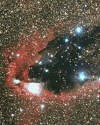
Born 25 Nov 1783; died 5 Mar 1875 at age 91.
French astronomer and mathematician who worked particularly on the determination of the distances of the stars. He began his career as an engineer, but soon became a mathematician at the Bureau des Longitudes in 1817 and later professor of astronomy in Paris. For many years Claude Mathieu edited the work on population statistics L'Annuaire du Bureau des Longitudes produced by the Bureau des Longitudes. His work in astronomy focussed on determining the distances to stars. He published L'Histoire de l'astronomie au XVIII siècle in 1827.
French astronomer and mathematician who worked particularly on the determination of the distances of the stars. He began his career as an engineer, but soon became a mathematician at the Bureau des Longitudes in 1817 and later professor of astronomy in Paris. For many years Claude Mathieu edited the work on population statistics L'Annuaire du Bureau des Longitudes produced by the Bureau des Longitudes. His work in astronomy focussed on determining the distances to stars. He published L'Histoire de l'astronomie au XVIII siècle in 1827.
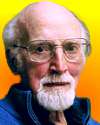
Died 25 Nov 2013 at age 98 (born 1 Mar 1915).
American artist, illustrator and naturalist who joined the American Natural History Museum at age 19, as an apprentice to assist in making dioramas, the backgrounds and senery to displays of stuffed animals. He learned his skills on the job. His art was to give depth, where there was none, and reality to re-creations of natural habitat that melded seamlessly into the physical display of taxidermy. The heydey, when most of his work was done, was in the period of the 1940s to 1960s. He would take field trips to view what he was to paint, to best get the first-hand feel of the interplay of light and colours of the landscape and fauna. In his New York Times obituary, he was credited with an uncanny ability to summon the illusion of air currents, odours and bugs to fill the space between in the several feet between the back of the case and the observer's glass.«
American artist, illustrator and naturalist who joined the American Natural History Museum at age 19, as an apprentice to assist in making dioramas, the backgrounds and senery to displays of stuffed animals. He learned his skills on the job. His art was to give depth, where there was none, and reality to re-creations of natural habitat that melded seamlessly into the physical display of taxidermy. The heydey, when most of his work was done, was in the period of the 1940s to 1960s. He would take field trips to view what he was to paint, to best get the first-hand feel of the interplay of light and colours of the landscape and fauna. In his New York Times obituary, he was credited with an uncanny ability to summon the illusion of air currents, odours and bugs to fill the space between in the several feet between the back of the case and the observer's glass.«
Windows on Nature: The Great Habitat Dioramas of the American Museum of Natural History, by Stephen Christopher Quinn. - book suggestion.
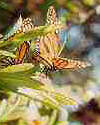
Died 25 Nov 1998 (born 1918?).
American amateur naturalist who on 2 Jan 1975, discovered the long-sought winter home of the monarch butterfly in the mountains of Mexico. From 1937, for 38 years, Canadian zoologist Freud Urquhart patiently investigated to establish the route and destination of the insects. Using tags on the wings of some butterflies, he followed their trails to Mexican territory. Kenneth C. Brugger, one of Urquhart's helpers, after a long period of traveling in the center of Mexico, found the first butterfly refuge. Within the territory of only 200 square meters, there are around 20 million butterflies. The area was cold and covered with oyamel trees and pine trees, a few kilometers from rural towns. Brugger died in Austin, Texas.
American amateur naturalist who on 2 Jan 1975, discovered the long-sought winter home of the monarch butterfly in the mountains of Mexico. From 1937, for 38 years, Canadian zoologist Freud Urquhart patiently investigated to establish the route and destination of the insects. Using tags on the wings of some butterflies, he followed their trails to Mexican territory. Kenneth C. Brugger, one of Urquhart's helpers, after a long period of traveling in the center of Mexico, found the first butterfly refuge. Within the territory of only 200 square meters, there are around 20 million butterflies. The area was cold and covered with oyamel trees and pine trees, a few kilometers from rural towns. Brugger died in Austin, Texas.
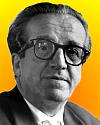
Died 25 Nov 1980 at age 79 (born 16 May 1901).
German-born American architect notable for his contributions to the mass production of building components. After emigrating to the U.S., together with Walter Gropius, he developed the General Panel System that was to become known as the "post-war dream house." Using prefabricated modular building units, five workers were able to assemble a house on site in under nine hours. Wachsmann developed a universal standard joint. It was this technique of invisible joinery that allowed prefabrication to become integrated in every aspect of building. The joint was to emerge as the central architectonic theme within this modular approach and has since become the standard for wood working and prefabrication.
German-born American architect notable for his contributions to the mass production of building components. After emigrating to the U.S., together with Walter Gropius, he developed the General Panel System that was to become known as the "post-war dream house." Using prefabricated modular building units, five workers were able to assemble a house on site in under nine hours. Wachsmann developed a universal standard joint. It was this technique of invisible joinery that allowed prefabrication to become integrated in every aspect of building. The joint was to emerge as the central architectonic theme within this modular approach and has since become the standard for wood working and prefabrication.
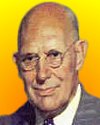
Died 25 Nov 1958 at age 82 (born 29 Aug 1876). quotes
Charles Franklin Kettering was an American engineer whose 140 patents included the electric starter, car lighting and ignition systems. In his early career, with the National Cash Register Co., Dayton (1904-09), he created the first electric cash register with an electric motor that opened the drawer. When he co-founded the Dayton Engineering Laboratories Company (DELCO, with Edward A. Deeds) he invented the key-operated self-starting motor for the Cadillac (1912) and it spread to nearly all new cars by the 1920s. As vice president and director of research for General Motors Corp. (1920-47) he developed engines, quick-drying lacquer finishes, anti-knock fuels, and variable-speed transmissions.« more
Charles Franklin Kettering was an American engineer whose 140 patents included the electric starter, car lighting and ignition systems. In his early career, with the National Cash Register Co., Dayton (1904-09), he created the first electric cash register with an electric motor that opened the drawer. When he co-founded the Dayton Engineering Laboratories Company (DELCO, with Edward A. Deeds) he invented the key-operated self-starting motor for the Cadillac (1912) and it spread to nearly all new cars by the 1920s. As vice president and director of research for General Motors Corp. (1920-47) he developed engines, quick-drying lacquer finishes, anti-knock fuels, and variable-speed transmissions.« more
Charles Franklin Kettering: A Biography, by T. A. Boyd. - book suggestion.
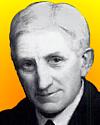
Died 25 Nov 1939 at age 67 (born 3 Nov 1872). quotes
Wilfred Batten Lewis Trotter was an English surgeon, who was an authority on cancers of the neck and head and recognized as a pioneer in neurosurgery. He took an interest in sociology and originated the term "herd instinct" in his book Instincts of the Herd in Peace and War (1914), referring to human behaviour. He was the first to study the psychology of animals, investigating gregariousness as an instinct, in a beehive, a flock of sheep and a wolf pack. He related how herd membership created a homogeneity whereby individuals would instead act together as one. Within humanity, he distinguished two disparate types of people: resistive and sensitive, which came into conflict as the former resisted change, while the latter embraced change.«
Wilfred Batten Lewis Trotter was an English surgeon, who was an authority on cancers of the neck and head and recognized as a pioneer in neurosurgery. He took an interest in sociology and originated the term "herd instinct" in his book Instincts of the Herd in Peace and War (1914), referring to human behaviour. He was the first to study the psychology of animals, investigating gregariousness as an instinct, in a beehive, a flock of sheep and a wolf pack. He related how herd membership created a homogeneity whereby individuals would instead act together as one. Within humanity, he distinguished two disparate types of people: resistive and sensitive, which came into conflict as the former resisted change, while the latter embraced change.«
Instincts of the Herd in Peace And War, by Wilfred Trotter. - book suggestion.
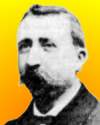
Died 25 Nov 1936 at age 78 (born 21 May 1858).
French mathematician and theorist whose contribution to the theory of functions, pseudo- and hyperelliptic integrals, and differential equations influenced the French school of mathematics. The Cauchy-Goursat theorem states the integral of a function round a simple closed contour is zero if the function is analytic inside the contour. Cauchy had established the theorem with the added condition that the derivative of the function was continuous. In 1891, he wrote Leçons sur l'intégration des équations aux dérivées partielles du premier ordre. Goursat's best known work is Cours d'analyse mathématique (1900-10) which introduced many new analysis concepts.
French mathematician and theorist whose contribution to the theory of functions, pseudo- and hyperelliptic integrals, and differential equations influenced the French school of mathematics. The Cauchy-Goursat theorem states the integral of a function round a simple closed contour is zero if the function is analytic inside the contour. Cauchy had established the theorem with the added condition that the derivative of the function was continuous. In 1891, he wrote Leçons sur l'intégration des équations aux dérivées partielles du premier ordre. Goursat's best known work is Cours d'analyse mathématique (1900-10) which introduced many new analysis concepts.
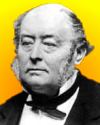
Died 25 Nov 1887 at age 71 (born 22 Dec 1815).
Swiss jurist and cultural anthropologist best known for his study of ancient matriarchies, Das Mutterrecht (1861; "Mother Right"), in which he desribed his finding that the matriarchy existed among all primitive peoples. He studied ancient civilizations in Italy, Greece, and Spain with a particular interest in the laws, customs, and rituals of ancient societies. He interpreted the spiritual and social worlds of ancient societies not only through analysis of myths, but also by the archaeological artifacts, and the information he drew from the iconography of funeral urns (though in this latter skill, his exactness may have sometimes strayed with his imagination).«
Swiss jurist and cultural anthropologist best known for his study of ancient matriarchies, Das Mutterrecht (1861; "Mother Right"), in which he desribed his finding that the matriarchy existed among all primitive peoples. He studied ancient civilizations in Italy, Greece, and Spain with a particular interest in the laws, customs, and rituals of ancient societies. He interpreted the spiritual and social worlds of ancient societies not only through analysis of myths, but also by the archaeological artifacts, and the information he drew from the iconography of funeral urns (though in this latter skill, his exactness may have sometimes strayed with his imagination).«
Myth, Religion, and Mother Right, by Johann Jakob Bachofen. - book suggestion.
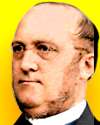
Died 25 Nov 1884 at age 66 (born 27 Sep 1818). quotes
Adolphe Wilhelm Hermann Kolbe was a German chemist who achieved the first widely recognized synthesis of an organic compound, defying the prevailing doctrines of vitalism by producing acetic acid from inorganic substances during his doctoral research. This was revolutionary as, according to vitalism, organic compounds could only be formed by living organisms. In 1859, he further advanced the field by synthesizing salicylic acid using phenol and carbon dioxide, a breakthrough which paved the way for cost-effective production of acetylsalicylic acid, more commonly known as aspirin. These seminal reactions are collectively termed as Kolbe’s synthesis. For chemical education, he emphasizing empirical methodology and practical learning.«
Adolphe Wilhelm Hermann Kolbe was a German chemist who achieved the first widely recognized synthesis of an organic compound, defying the prevailing doctrines of vitalism by producing acetic acid from inorganic substances during his doctoral research. This was revolutionary as, according to vitalism, organic compounds could only be formed by living organisms. In 1859, he further advanced the field by synthesizing salicylic acid using phenol and carbon dioxide, a breakthrough which paved the way for cost-effective production of acetylsalicylic acid, more commonly known as aspirin. These seminal reactions are collectively termed as Kolbe’s synthesis. For chemical education, he emphasizing empirical methodology and practical learning.«
The Quiet Revolution: Hermann Kolbe and the Science of Organic Chemistry, by Alan J. Rocke. - book suggestion.
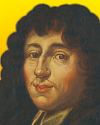
Died 25 Nov 1686 at age 48 (born 10 Jan 1638). quotes
(a.k.a. Niels Steensen, or Stensen), who first and made unprecedented discoveries in anatomy, then established some of the most important principles of modern geology. During medical studies in Amsterdam he discovered “Stensen's duct” providing saliva from the parotid gland to the mouth. He was Danish royal anatomist for 2 years. Interested by the characteristics and origins of minerals, rocks, and fossils, he published in Prodromus (1669) the law of superposition (if a series of sedimentary rocks has not been overturned, upper layers are younger and lower layers are older) and the law of original horizontality (although strata may be found dipping steeply, they were initially deposited nearly horizontal.)[DSB gives date of death 25 Nov/5 Dec 1686 (O.S./N.S.). EB gives 26 Nov 1686.]
(a.k.a. Niels Steensen, or Stensen), who first and made unprecedented discoveries in anatomy, then established some of the most important principles of modern geology. During medical studies in Amsterdam he discovered “Stensen's duct” providing saliva from the parotid gland to the mouth. He was Danish royal anatomist for 2 years. Interested by the characteristics and origins of minerals, rocks, and fossils, he published in Prodromus (1669) the law of superposition (if a series of sedimentary rocks has not been overturned, upper layers are younger and lower layers are older) and the law of original horizontality (although strata may be found dipping steeply, they were initially deposited nearly horizontal.)[DSB gives date of death 25 Nov/5 Dec 1686 (O.S./N.S.). EB gives 26 Nov 1686.]
The Seashell on the Mountaintop, by Alan Cutler. - book suggestion.
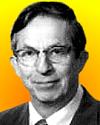
Ledley

Cross-sectional anatomy: An atlas for computerized tomography, by Robert Steven Ledley. - book suggestion.
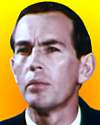
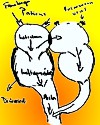
In 1960, the first atomic reactor for research and development began operation at Richland, Wa. The plant was built to determine the suitability of plutonium as a reactor fuel. There was a need to recycle plutonium resulting from weapons production. Plutonium-239 enriched uranium-235 was expected to give increased energy output, with less need for the expensive uranium-isotope separation facilities. The Hanford Atomic Products Operation was operated by the General Electric Company for the Atomic Energy Commission.«
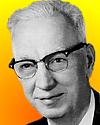
In 1948, cable television was invented by Leroy "Ed" Parsons, (1907-89), who sold electronics and ran a radio station in Astoria, Oregon. On Thanksgiving Day, the Parsonses watched KRSC's inaugural broadcast from the TV station 150 miles away in Seattle. He picked up a usable signal with a large antenna on the roof of the John Jacob Astor Hotel, and strung a coaxial cable across the street to his living room. He placed a TV in the hotel lobby and a TV in a store window. As others in town wanted the same service, Parsons helped them hook into a system using a community antenna on Coxcomb Hill completed Feb 1949. He moved to Alaska in 1953, and by 1967 had installed the state's first cable system in Barrow, Alaska.«
CATV: A History of Community Antenna Television, by Mary Alice Mayer Phillips. - book suggestion.
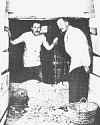
In 1922, archaeologist Howard Carter opened the first of two doorways to the tomb of King Tutankamun. In his diary, Carter recorded, "Noted seals. ... Opened the first doorway; which comprised rough stones built up from the threshold to the lintel, plastered over on the outside face, and covered with numerous impressions from various seals of Tut.ankh.Amen and the Royal Necropolis seal. ... As we cleared the passage we found mixed with the rubble broken potsherds, jar seals, and numerous fragments... These were disturbing elements as they pointed towards plundering." The next day, the second doorway was opened.[Image: Carter and his backer Lord Carnavon by the wall leading to burial chamber of King Tut.]
The Discovery of the Tomb of Tutankhamen, by Howard Carter and A. C. Mace. - book suggestion.
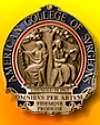
In 1910, the American College of Surgeons was incorporated "to elevate the standard of surgery, to establish a standard of competancy and character for practioners of surgry, and to educate the public and the profession to understand that the practice of surgery calls for special training." The first medical society in the U.S. was a short-lived, somewhat ineffective, local organization in Boston, Mass. (1735-41). The Massachusetts Medical Society was the first effective, state-charter medical society, incorporated on 1 Nov 1781. No permanent, national medical society existed in the U.S. until the American Medical Association was organized on 5 May 1847. Other specialties formed societies in the U.S. before the ACS.«
Fellowship of surgeons: A history of the American College of Surgeons, by Loyal Davis. - book suggestion.
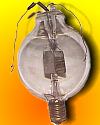
In 1906, the first triode was ordered by Lee de Forest who instructed the New York automobile lamp maker, H. W. Candless, to make a glass bulb containing a "grid" wire between a filament and an electrode plate. These specifications extended the Fleming two-element diode valve design previously published in the Proceedings of the Royal Society. The third element - the grid wire - regulated the flow of electrons between the filament and the anode plate, producing an amplification of the variations in a signal voltage applied to the grid. De Forest named his invention the "Audion." Within a few years (1913-1917) he was able to profit from his patents that he sold to AT&T for a total of $390,000.«[Image: A de Forest Audion tube, circa 1912.]
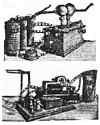
In 1905, the first U.S. advertisement for a radio receiver appeared in this day's issue of the Scientific American. The one-inch advertisement was for the Telimco, which offered for $8.50 a "Complete Outfit comprising 1-inch Spark Coil, Strap Key, Sender, Sensitive Relay, Coherer, with Automatic Decoherer and Sounder, 4 ex. Strong Dry Cells, all necessary wiring, including send and catch wires, with full instructions and diagrams." This system was suitable for sending dots and dashes (not full audio). The advertisement also said, "Guaranteed to work up to one mile. Send for Illust. pamphlet." It was offered by Hugo Gernsback of The Electro Importing Company. The product name was an acronym of the company name.
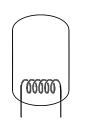
©1995
In 1901, Owen Willans Richardson read a paper before the Cambridge Philosophical Society which first announced his work on thermionic emission (the release of electrons from hot metals) and in particular a law which mathematically described how the amount of electron current increased as the temperature of the hot surface was raised. (He had been working at the Cavendish Laboratory only one year since his graduation from Cambridge University.) As recorded in the published Proceedings, in Richardson's words: "If then the negative radiation is due to the corpuscles coming out of the metal, the saturation current s should obey the law s = AT1/2e-b/T." The discovery of Richardson's law earned him the 1928 Nobel Prize for Physics.
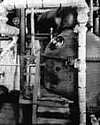
In 1884, the first U.S. patent for the process of evaporated milk was issued to John Meyenberg, a Swiss immigrant, of St Louis, Missouri (No. 308,422). Gail Borden had already been marketing condensed milk, but that was sweetened as part of the preserving process. Evaporated milk is not sweetened, and has up to 75% of the water removed from the cow's milk. Meyenberg's process began by heating the milk with external steam heat, while being stirred, followed by cooling, straining, then condensing in vacuo, cooling further and sealing in hermetically sealed cans. The cans were sterilized by being turned in a frame inside a large steam heated cylinder. That apparatus was also patented (issued on the same day, No. 308,421).«
more
In 1837, the first U.S. patent for a silk figure power loom was issued to William Crompton of Taunton, Massachusetts (No. 491). The figure or pattern of the cloth was made on a chain.
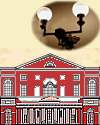
In 1816, the Chestnut Street Theatre at Philadelphia, Pennsylvania, was illuminated with gas lights. Impressed with Dr. Charles Kugler's demonstration at Peale's Museum of lights "burning without wick or oil," the managers, Warren and Wood, had Kugler install a plant to generate gas at their theatre. Although the managers announced that audiences could expect their gas lights gave "superior safety, brilliance and neatness," there was some considerable opposition from some quarters. The works were denounced as a menace to public health and safety, emitting an unpleasant stench, with a potential for an explosion causing death and destruction*. [Image top: gas-light fixture from another building; bottom: reconstruction elevation drawing of Theatre.]
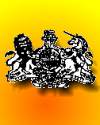
In 1715, the first British patent be granted to an American was G.B. No. 401 (1715) to "Thomas Masters, Planter of Pennsylvania, for an invention foundout by Sibylla his wife for cleaning and curing the indian Corn growing in several colonies in America.* The first patent issued within the colonies was for a new method of extracting salt, granted to Samuel Winslow by Massachusetts in 1641. It was not until 31 Jul 1790 that a patent was issued by the federal government. Samuel Hopkins was granted a patent for his process of making potash and pearl ashes. This was a document signed by President George Washington, Thomas Jefferson and Edmund Randolph as the Patent Office was not formed until 1801.«




